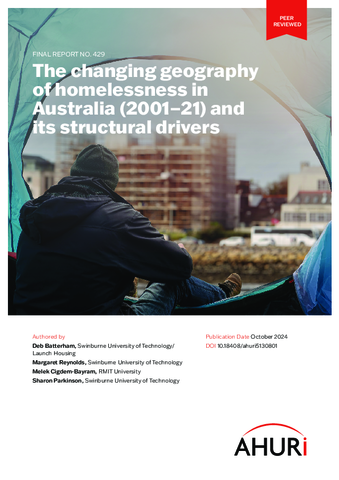Homelessness has grown in the suburbs of Australian capital cities, with more than 60 per cent of those experiencing homelessness at the 2021 Census found in Australia’s capital cities (up from around 48% in 2001). Homelessness has increased especially in areas with greater shortages of affordable private rental housing (relative to demand from low income households).
The research, ‘The changing geography of homelessness in Australia (2001–21) and its structural drivers’, undertaken for AHURI by researchers from Swinburne University of Technology, Launch Housing and RMIT University, investigates the changing geography of homelessness in Australia from 2001 to 2021 and the role of structural factors, such as poverty and supplies of affordable rental housing, in shaping this geography.
Homelessness was also higher in areas with smaller supplies of social housing relative to demand. The research suggests that an increase in social housing will further significantly reduce homelessness.
In areas with a greater shortage of affordable rental dwellings, a higher percentage of Specialist Homelessness Service clients are returning for support after having been assisted. As the majority of people experiencing homelessness tend to remain in the same area, localised responses to homelessness are really important. Homelessness services and affordable housing options need to be expanded in areas where they are needed, and not just where existing services are located.
In order to provide housing to clients who accessed a Specialist Homelessness Service in 2021–22, the research estimated that around 158,000 one- to two-bedroom dwellings and 25,000 three-or-more-bedroom dwellings are needed nationally. These dwellings must be affordable and available to households with the lowest incomes.


